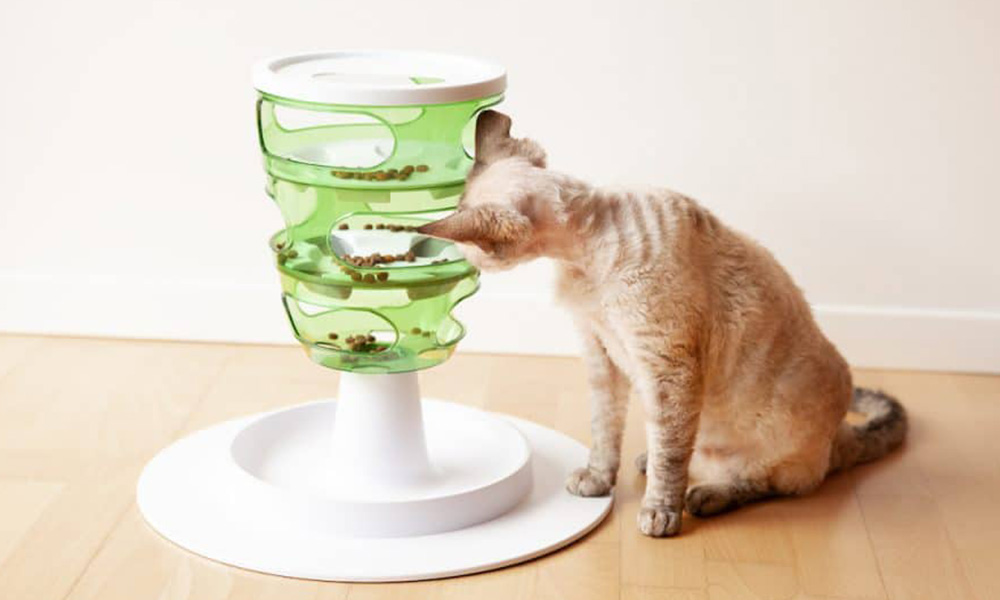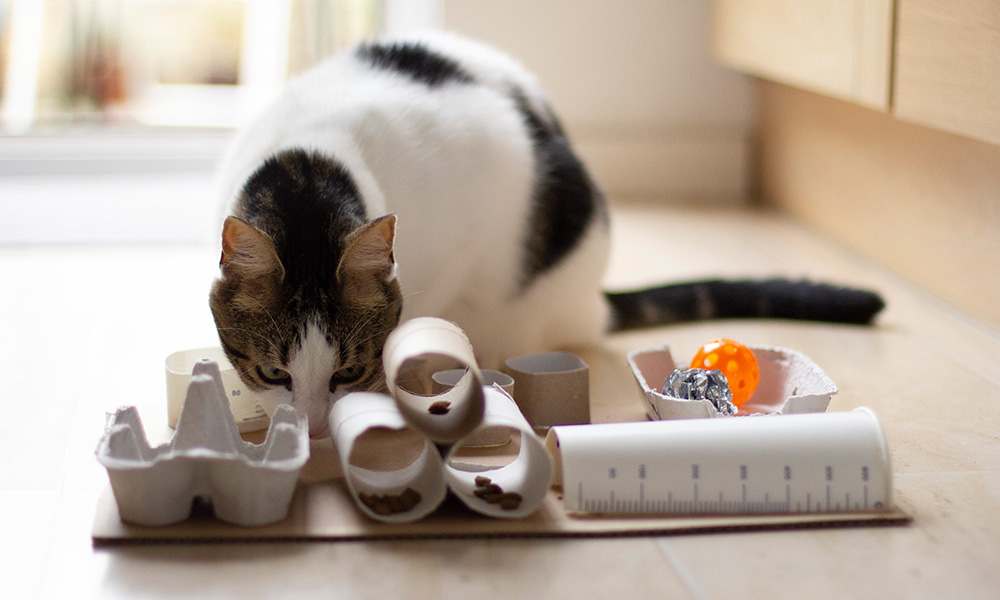It’s a standard routine for most cats: find food in the same bowl, in the same spot every day. It’s easy and requires no effort, but it’s not very exciting. It’s far from the thrilling chase-and-catch game they would play if hunting for their food, which would give them both mental and physical exercise.
Cats getting bored is a real problem. It can make them feel lazy, worried, or even start acting out. If they only have to stroll over to their bowl to eat, they might end up eating more than they should and not burning off those extra calories, which could lead to weight gain.
That’s why it’s a good idea to mix things up a bit at mealtime. Let your cat tap into its natural hunting instincts with puzzle feeders (or food puzzles). These cool toys hold food and require your cat to figure out how to get it out. It’s a great way to make mealtime last longer, get your cat moving, and give them a fun challenge!
A recent study* even proved that puzzle feeders are awesome for cats. They help to calm cats down, help them lose weight, become less aggressive, and feel less anxious.

They can even stop cats from seeking attention or going to the toilet in the wrong places. The best part is that all cats can use puzzle feeders, whether they’re old, young, three-legged, blind, or have other disabilities.
Want to know more about different puzzle feeders, how to make them at home, and tips to get your cat to use them?
Check out this website created by the study’s authors: http://foodpuzzlesforcats.com.
Puzzle Feeders: What’s Out There?
Puzzle feeders can hold both wet (like canned food or pouches) and dry food.
There are loads of different types to choose from, and they all require your cat to work in different ways to get their food. Some need your cat to get the food out with their paws, others need them to use their tongue and jaws.
You can even make your own puzzle feeders at home cheaply and easily. Some can be made to work the same way as the store-bought ones. And if you’re not sure how to get started, don’t worry! There are guides online that show you how to make these fun feeders, and even suggest ways to change how you feed your cat to keep them healthy and happy.
Getting Your Cat Started with Puzzle Feeders
Introducing puzzle feeders to your cat should be a gradual process. This gives your cat time to figure out how to use them without getting too frustrated. Here are some tips:
- Keep feeding your cat some food in a bowl, but also put some in the puzzle feeder.
- Make sure it’s easy for your cat to get the food out of the puzzle feeder at first.
- Use puzzle feeders that are clear or have many openings, so your cat can see, smell, and hear the food.
- Sprinkle some dry food around the puzzle feeder to get your cat interested in it.
Once your cat gets the hang of the puzzle feeder, you can make it a bit harder. But remember, the aim is to challenge your cat, not frustrate them.
Different cats like different things, so try out a few types of puzzle feeders. This will keep your cat on their toes, and they won’t get bored. And most importantly, it lets your cat use their natural hunting behaviours, gives them a workout, and provides some fun. What could be better for a happier, healthier cat?
*Dantas LMS, Delgado MM, Johnson I, and Buffington CAT. Food puzzles for cats: feeding for physical and emotional wellbeing. J Feline Med Surg 2016; 18: 723-732.


